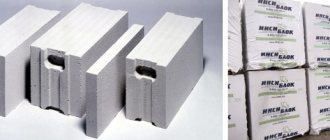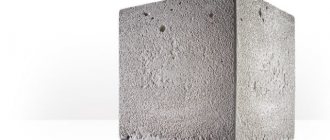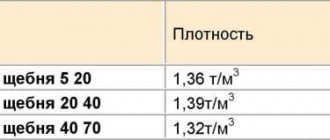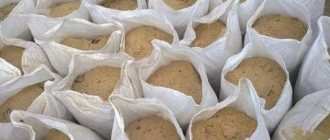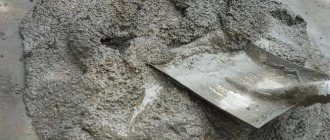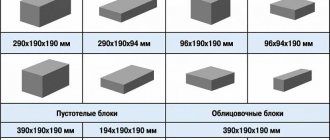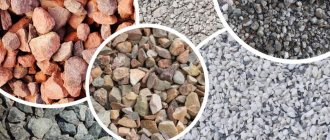Weight m3 of crushed stone: main aspects
Crushed stone is a material that is mined in a quarry. How long the constructed buildings will last depends on its technical characteristics. When arranging any object, you initially need to determine how much materials are needed. To do this, such an important indicator as the crushed stone fraction is taken into account.
There are different types of materials on sale. The specific choice depends on the tasks at hand. The assortment includes crushed stone of different fractions:
- screenings are a by-product that is formed during the extraction of crushed stone. It is used for filling paths and laying paving slabs;
- 5-10 mm is a fine fraction used to achieve different purposes. For example, concrete production;
- 5-20 mm is a common material that is widely used in concrete work and in the construction of airfield pavement;
- 20-40 mm – medium size fraction. Such crushed stone is used in the construction of highways, tram tracks, as well as when pouring the foundation for a house;
- 40-70 mm – large fraction. This type of non-metallic material is indispensable in the manufacture of massive structures, in the construction of structures, in the construction of the lower surface of roads;
- 70-120 mm is an irregularly shaped stone. It is used when creating gabions and finishing fences.
If you are interested in how much crushed stone is in 1 m3 , pay attention to its fraction. This is a significant parameter that cannot be neglected. For example, crushed stone with a fraction of 5 mm weighs less than stones with a fraction of 40 mm. Taking this indicator into account, it is possible to correctly determine the volume of materials required for the construction of the facility.
Types of stone
Crushed stone is a product of crushing various rocks; slag material can also be obtained as a result of metal production. Several varieties are used in construction.
Crushed stone used in construction work is:
- granite - it is the most expensive, strong and durable, characterized by maximum bulk density;
- marble - one of the heaviest types of crushed stone;
- limestone - it weighs much less than granite, is used in the manufacture of concrete (with low grade cement), and in the production of other products;
- sandstone - this variety is used for general construction work;
- slag – the stone is heavy and has a low price;
- tuff is the lightest material.
How many m3 are in a ton of crushed stone?
To answer this question, you need to determine the density of the materials. There are two types of this indicator. The first option is the true density of crushed stone. This indicator is determined in laboratory conditions. It means the mass per unit volume, which does not take into account existing voids. This value is determined using a special formula. The laboratory staff are well versed in the intricacies of their profession. Therefore, they easily calculate the true density of stones.
The second option is bulk density. This is a term used to describe the relationship between the mass of stones and the volume, taking into account the presence of free space between the particles. When answering the question of how much crushed stone is in 1 m3 , this parameter is extremely important. Bulk density or, as they also say, the specific gravity of crushed stone directly depends on the fraction of stones. The larger the crushed stone, the more voids are formed between the individual elements.
The weight of m3 of crushed stone is important when solving construction problems. The density of the material is taken into account when mixing the solution. The higher the obtained indicator, the less cement will be used when mixing the solution. This is a significant point, since with correct calculation, money is saved.
The density of crushed stone is taken into account when transporting it to its destination. When submitting an application, the company’s specialists calculate the vehicle’s carrying capacity. They decide how much crushed stone can be brought to the site in KamAZ. For example, at a construction site or on a highway.
The bulk density of crushed stone is determined using a measuring vessel and tables. In the first case, a special formula is used. The calculations take into account the mass of an empty cylindrical vessel, the capacity of the container and the mass of the vessel together with the stones. In the second case, a table is used. It indicates the bulk density of the stones. For example, crushed stone with a fraction of 20 mm weighs 1370 kg/m3, and with a fraction of 70 mm - 1400 kg/m3.
Dependence of mass on characteristics
For a weight of 1 m
3
crushed stone is influenced by many factors. It depends on:
Table of specific gravity of bulk building materials
- water absorption coefficient;
- feedstock;
- fractions and forms of material;
- presence of impurities;
- storage conditions.
It is almost impossible to accurately determine the bulk density of crushed stone. There are always air gaps between the grains. The more free space, the lighter the cubic meter of product. The ability of a material to absorb moisture leaves its mark. The calculation error caused by water absorption can reach 10%.
The compaction of grains is largely determined by their shape. Not only the mass of a cubic meter, but also the characteristics, as well as the cost of finished products, depends on the flakiness (the content of lamellar and oblong stones in the total volume).
It is important to understand that in the production of concrete, the use of a fraction of grains that have a cubic shape helps to use aggregate more economically and increase the strength of the product.
How much crushed stone per m3?
Determining the density of stones is influenced by what kind of material is used in construction. The assortment includes several types of crushed stone:
- Granite crushed stone is a stone with high strength. This is a nonmetallic material that is mined in a quarry. It is used in the construction of bridges, in the decorative design of artificial reservoirs, and in laying foundations. The weight of m3 of granite crushed stone depends on the fraction. Average value – 1500 kg/m3;
- Limestone crushed stone is a building material with a dense structure. It is environmentally safe and resistant to temperature changes. There are numerous deposits of crushed limestone. Therefore, there are no problems with the delivery of materials to the site. How much crushed stone is in 1 m3? Approximately – 1280 kg/m3. Before starting construction, keep this point in mind;
- Crushed gravel is a material used when pouring foundations, in road construction, and in the construction of railway embankments. Crushed gravel is indispensable in landscape design. With its help, flower beds and paths are arranged. The average weight of such material is 1430 kg/m3;
- Slag crushed stone is a special type of material that is obtained by crushing metallurgical slag. It has good strength and frost resistance. Slag crushed stone is used in the production of reinforced concrete products, in road construction and in the construction of asphalt concrete pavements. The weight of m3 of crushed stone of this type is 1800-2000 kg/m3.
What affects the volume of crushed stone?
The only characteristic that affects the volume of crushed stone is its fraction. If there is only one faction, then it will not settle tightly even with strong shaking. Due to this, a large number of voids are obtained, and the larger the fraction, the less the cubic meter will weigh. The densest is the so-called granite screening, which is more reminiscent of fine gravel. It weighs so much that you need to be careful when filling trucks so as not to tear the frame and springs.
The volume also greatly depends on the nature of the rock and on the equipment installed at the mining and processing plant. The fact is that only cuboid and prismatic fragments demonstrate the best compaction.
The flakiness of crushed stone greatly reduces its density, which will also then affect its density. Crushed stone can also be limestone. Not only is the density of this rock quite low, but also the curved fragments that form the fraction fit very poorly with each other. That is why this material is only suitable for road construction. It should only be used as a concrete filler as a last resort. You can use it to build a one-story building - a house, garage or barn. The second floor on concrete made of crushed limestone will be unpredictable.
Water absorption is an equally important factor in determining the weight of a cubic meter of crushed stone. Neglecting this factor in calculations will result in inaccurate results. Water absorption is also influenced by different rock porosities and different fraction sizes, and if they are not taken into account, the calculations will be incorrect.
How many liters of water are in a cube?
Putty consumption per 1m2 - consumption of starting and finishing putty
How much crushed stone does KamAZ have?
KamAZ is a truck widely used for delivering non-metallic materials to the site. It has good maneuverability and is ideal for transporting crushed stone and other cargo.
Buyers are often interested in how much crushed stone fits in a KamAZ. They don't want to overpay for materials that were not delivered. When the car arrives at the site, you can make simple calculations. To do this, you need to take a tape measure and measure the length, width, height of the body. By multiplying the numbers you can find out the volume of the cargo. Also, do not forget that several more cubes of stones are placed on top of the sides. Therefore, you need to add 1-2 cubes to the previously obtained result.
KamAZ trucks of different carrying capacity are used to transport crushed stone. To find out the volume of crushed stone that will fit in the car, you need to use a certain formula. Its essence is this: the load capacity is divided by the density of the material. Let's give one simple example. If the fleet has a dump truck with a carrying capacity of 15 tons, it is possible to deliver 11 cubic meters of crushed stone, the density of which is 1300 kg/m3. To obtain this figure, a simple calculation was made: 15,000 was divided by 1,300 and we got 11.5 m3.
To find out how many m3 are in a ton of crushed stone , you need to take into account all of the above parameters. After carrying out simple calculations, you can easily determine the exact weight of the materials. Therefore, money will be paid for the actual amount of crushed stone, and not for air.
Fractions used
Crushed stone of various fractional compositions is used in construction. The dependence of the specific gravity of crushed stone can be seen using the example of granite.
| Fractions of crushed stone from granite rocks, mm | Weight in crushed stone cube, kg |
| 0–5 | 1410 |
| 5–10 | 1380 |
| 5–20 | 1350 |
| 5–25 | 1380 |
| 20–40 | 1350 |
| 25–60 | 1370 |
| 40–70 | 1350 |
As the table of crushed stone weights by fraction clearly demonstrates, smaller grains that fill the volume more densely weigh slightly more than large stones.


